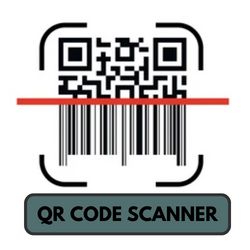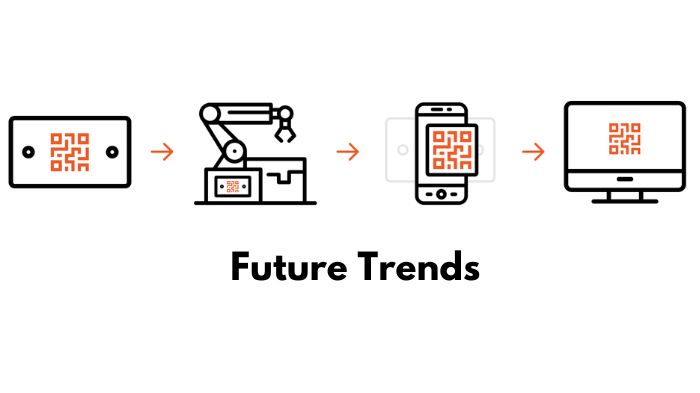
QR codes, those pixelated black-and-white squares we encounter daily, have become an integral part of modern life. From marketing campaigns to contactless transactions, these codes serve as efficient gateways to information. In this article, we delve into the fascinating world of QR code-to-text conversion, exploring its mechanics, applications, advantages, and challenges.
Brief Overview of QR Codes
QR codes, short for Quick Response codes, were first developed in 1994 by Denso Wave, a subsidiary of Toyota. Initially used in automotive manufacturing, QR codes gained widespread popularity due to their efficiency in encoding data.
Evolution of QR Codes in Modern Technology
Over the years, QR codes have evolved beyond their industrial origins. Today, they are ubiquitous in various sectors, from retail and healthcare to logistics and education. The evolution of QR codes reflects their adaptability in an ever-changing technological landscape.
Purpose of QR Code to Text Conversion
The conversion of QR codes to text opens up new possibilities for accessing information. This article explores the significance of translating these codes into readable text and how it enhances user experience.
Understanding QR Codes
Explanation of QR Code Structure
A typical QR code consists of black squares arranged on a white square grid. Each square contains encoded information, and the arrangement allows for quick scanning and decoding.
Types of QR Codes
- Static QR Codes
- Static QR codes contain fixed data and are widely used for straightforward information sharing, such as URLs or contact details.
- Dynamic QR Codes
- Dynamic QR codes allow for flexibility as their encoded content can be changed, making them suitable for applications requiring real-time updates.
Significance of QR Codes in Information Storage
QR codes serve as efficient data storage units, capable of holding various types of information, including alphanumeric characters, binary data, and even Kanji characters.
QR Code to Text: How It Works

Mechanism of QR Code Scanning
Scanning a QR code involves using a mobile device or dedicated scanner. The device’s camera captures the QR code, and specialized algorithms decode the information.
Interpretation of Encoded Data
The decoded data from a QR code is typically a string of text. Understanding how this text is interpreted opens the door to the wealth of information encoded in the QR code.
Role of Algorithms in Decoding
Advanced algorithms play a crucial role in decoding QR codes accurately. These algorithms analyze the pattern of black and white squares, correcting errors and extracting the intended information.
Applications of QR Code to Text Conversion
Inventory Management
In industries such as retail and logistics, converting QR codes to text streamlines inventory management. It provides quick access to product details, facilitating efficient stock tracking.
Marketing and Advertising
Marketers leverage QR codes to bridge the physical and digital worlds. Converting these codes to text ensures seamless integration with marketing campaigns, allowing users to access promotional messages effortlessly.
Contactless Transactions
QR codes play a pivotal role in contactless payments. Converting payment-related QR codes to text ensures accurate processing, contributing to the widespread adoption of cashless transactions.
Access Control Systems
Securing access to restricted areas is made more efficient with QR codes. Converting access control QR codes to text enhances security measures, allowing for precise verification of permissions.
Advantages of Using QR Code to Text Conversion
Quick Data Retrieval
Converting QR codes to text enables rapid retrieval of information, eliminating the need for manual input. This significantly enhances user convenience.
Enhanced Security Features
Text-based QR code information allows for encryption and additional security layers, safeguarding sensitive data during transmission and storage.
Integration with Mobile Devices
The compatibility of text-based QR codes with mobile devices ensures a seamless user experience, as users can easily copy, share, or search for the extracted information.
Environmental Sustainability
By reducing the need for physical documents, QR code-to-text conversion contributes to environmental sustainability. It aligns with the growing emphasis on eco-friendly practices.
Challenges in QR Code to Text Technology

Error Correction in Scanning
Despite advancements, QR code scanning may encounter errors, leading to inaccuracies in text extraction. Ongoing efforts in error correction mechanisms aim to mitigate this challenge.
Compatibility Issues
Not all QR code scanners interpret various formats uniformly. This creates compatibility challenges that need to be addressed for seamless user experiences.
Security Concerns
As QR codes become more integral to security systems, the risk of malicious activities also rises. Ensuring robust security measures in QR code-to-text conversion is imperative.
Future Prospects for Improvement
The challenges faced today pave the way for future improvements. Innovations in scanning technology and enhanced algorithms promise a more efficient QR code-to-text conversion process.
QR Code to Text vs. Traditional Text Input
Speed and Efficiency Comparison
QR code-to-text conversion proves faster than traditional text input methods. This speed advantage is particularly significant in applications requiring quick data retrieval.
User-Friendly Interface
The simplicity of scanning a QR code enhances user-friendliness, especially for individuals less familiar with technology. This ease of use contributes to the widespread adoption of QR codes.
Cost-Effectiveness
In scenarios requiring mass information distribution, QR codes offer a cost-effective solution compared to traditional methods. The efficiency in data transmission contributes to overall cost savings.
QR Code to Text Conversion Tools and Software
Overview of Popular Conversion Tools
- Online Platforms
- Online platforms such as QR code readers on websites or mobile apps provide convenient tools for converting QR codes to text.
- Mobile Applications
- Dedicated mobile applications enhance the user experience by offering specialized features for QR code scanning and text extraction.
Features to Look for in QR Code Converters
When choosing a QR code-to-text converter, certain features ensure optimal functionality. These include accuracy, compatibility, and additional security measures.
Step-by-Step Guide to QR Code to Text Conversion
Choosing the Right Converter
Selecting a reliable converter is the first step. Consider user reviews, features, and compatibility with your device to make an informed choice.
Scanning QR Code
Position your device’s camera over the QR code and ensure proper lighting. Once the code is scanned, the converter will extract the encoded text.
Interpretation of the Extracted Text
Review the extracted text for accuracy. Depending on the purpose, you may use the information for various applications, from accessing a website to processing a payment.
Case Studies on Effective QR Code-to-Text Implementation
Success Stories in Business Applications
Several businesses have successfully integrated QR code-to-text conversion for streamlined operations and enhanced customer interactions.
Real-world Examples of QR Code Integration
From retail giants to small businesses, real-world examples showcase the versatility and effectiveness of QR codes in diverse applications.
User Experiences and Feedback
Understanding user experiences provides valuable insights into the practical aspects of QR code-to-text conversion. Positive feedback highlights the success of implementation, while constructive criticism informs areas for improvement.
Future Trends in QR Code Technology

Emerging Innovations
Ongoing research and development lead to innovations such as colour QR codes and enhanced data storage capabilities, expanding the potential applications of QR code technology.
Integration with Augmented Reality (AR)
The convergence of QR codes with augmented reality opens up interactive possibilities, providing users with immersive experiences beyond simple information extraction.
Potential Impact on Various Industries
As QR code technology evolves, its impact on industries diversifies. From healthcare to education, the potential applications of QR codes continue to expand.
Best Practices for QR Code-to-Text Implementation
Ensuring Data Accuracy
Regularly update and maintain QR code databases to ensure accurate extraction of text. Periodic reviews of the decoding process contribute to overall data accuracy.
Security Measures
Implement robust security measures to safeguard sensitive information encoded in QR codes. Encryption and secure transmission protocols are essential components of a secure system.
Regular Updates and Maintenance
Stay abreast of technological advancements and update QR code to text conversion tools regularly. This proactive approach ensures compatibility and optimal performance.
Regulatory Compliance in QR Code Usage
Data Protection and Privacy Regulations
Adherence to data protection laws and privacy regulations is paramount. QR code-to-text conversion systems must align with legal standards to ensure the responsible use of user data.
Industry Standards and Guidelines
Following industry standards and guidelines provides a framework for the ethical and efficient implementation of QR code-to-text conversion technologies.
Common Misconceptions about QR Code to Text Conversion
Security Myths
Dispelling common security myths surrounding QR code-to-text conversion fosters a clearer understanding of the technology’s safety features.
Data Integrity Concerns
Addressing misconceptions about data integrity promotes confidence in the accuracy of QR code-to-text conversion processes.
Clarifying Misinformation
In a rapidly evolving technological landscape, clarifying misinformation ensures that users and businesses make informed decisions regarding QR code-to-text conversion.
Educational Resources for QR Code Technology
Online Tutorials and Courses
Accessing online tutorials and courses provides individuals and businesses with the knowledge needed to implement QR code-to-text conversion effectively.
Webinars and Workshops
Participating in webinars and workshops facilitates a deeper understanding of QR code technology and its practical applications.
Community Forums and Discussions
Engaging in community forums and discussions allows for knowledge exchange and problem-solving within the QR code-to-text conversion community.
Conclusion
Recap of Key Points
In conclusion, the conversion of QR codes to text represents a pivotal advancement in information accessibility. From its origins in automotive manufacturing to its widespread use in various industries, QR code-to-text conversion continues to shape the way we interact with data.
Future Prospects and Recommendations
The future of QR code technology holds exciting possibilities, with ongoing innovations and integrations. Businesses and individuals are encouraged to stay informed, embrace best practices, and explore the evolving landscape of QR code-to-text conversion.
FAQs:
QR Code-to-Text conversion is the process of translating information encoded in a QR code into readable text. This allows for easy interpretation and utilization of the encoded data.
The process involves scanning a QR code using a device’s camera, decoding the information using specialized algorithms, and presenting the user with the extracted text.
There are primarily two types of QR codes:
Static QR Codes: Contain fixed data and are suitable for straightforward information sharing.
Dynamic QR Codes: These allow for flexible content updates, making them ideal for real-time applications.
QR Code-to-text conversion finds applications in various sectors, including inventory management, marketing, contactless transactions, and access control systems.
Key advantages include quick data retrieval, enhanced security features, seamless integration with mobile devices, and contributions to environmental sustainability.
Challenges include error correction in scanning, compatibility issues, security concerns, and ongoing efforts for future improvements.
QR Code-to-Text conversion is faster, offers a user-friendly interface, and is cost-effective for mass information distribution compared to traditional text input methods.
Popular tools include online platforms like QR code readers on websites, as well as dedicated mobile applications with specialized features for scanning and text extraction.
The process involves choosing the right converter, scanning the QR code with a device’s camera, and interpreting the extracted text for various applications.
Yes, various businesses have successfully integrated QR code-to-text conversion for streamlined operations. Real-world examples and user experiences provide insights into its practical applications.
Future trends include emerging innovations, integration with augmented reality (AR), and the potential impact on various industries as QR code technology continues to evolve.
Best practices include ensuring data accuracy through regular updates, implementing robust security measures, and adhering to regulatory compliance and industry standards.
Yes, there are online tutorials, courses, webinars, workshops, and community forums that provide comprehensive knowledge of QR Code technology and its applications.
Businesses can address misconceptions by dispelling security myths, clarifying concerns about data integrity, and providing accurate information to users and stakeholders.
QR Code-to-Text conversion plays a pivotal role in enhancing information accessibility and shaping the way we interact with data across various industries.